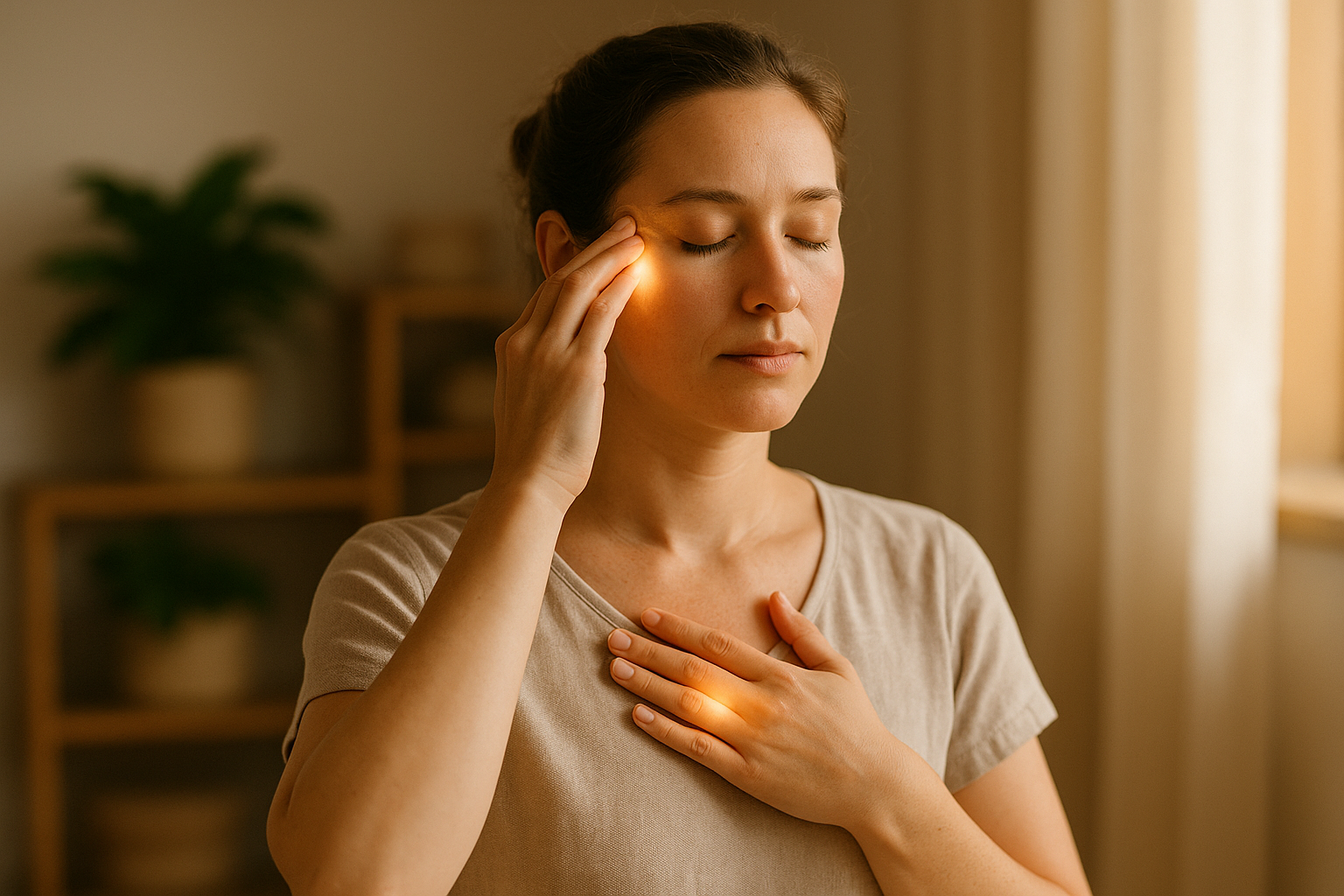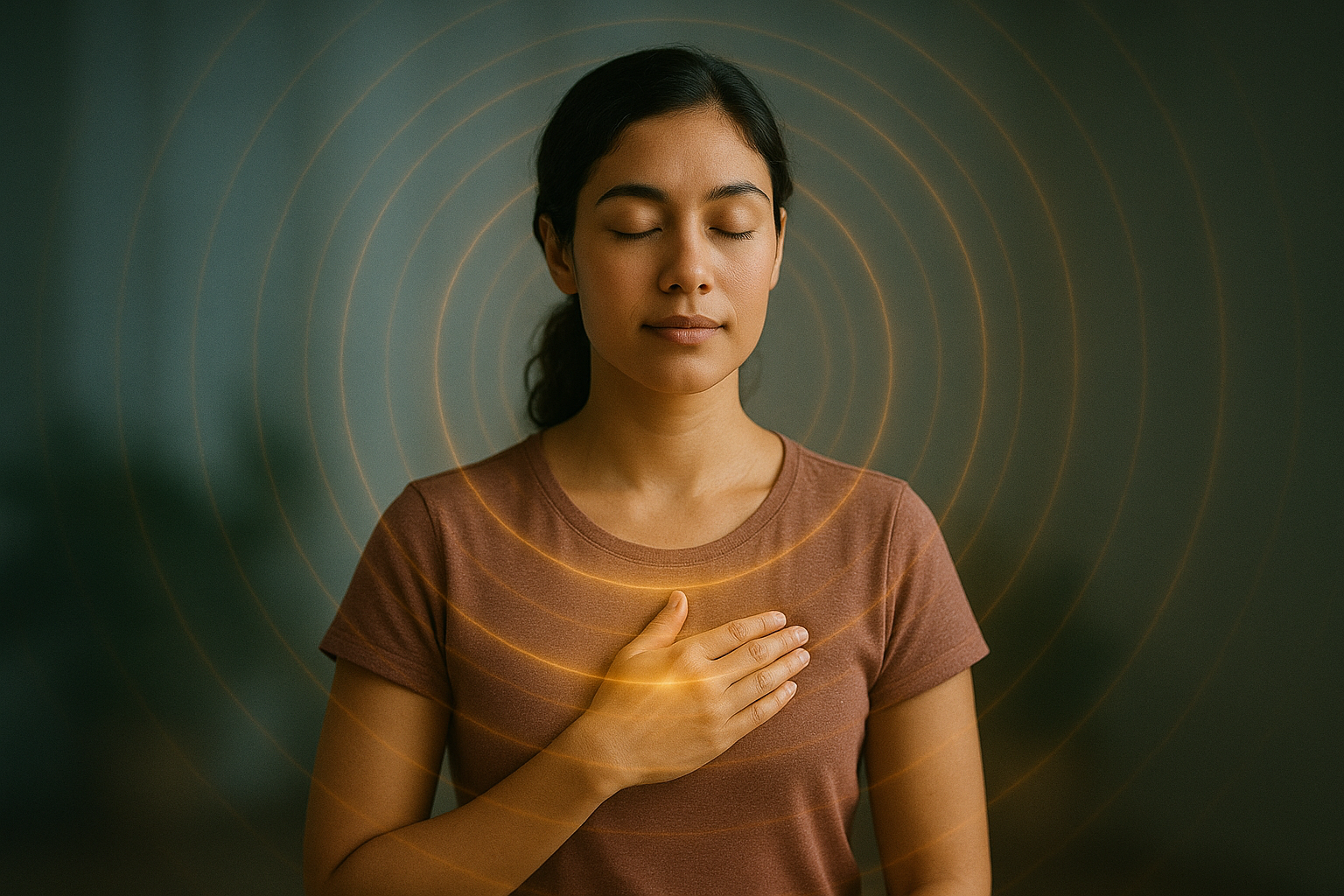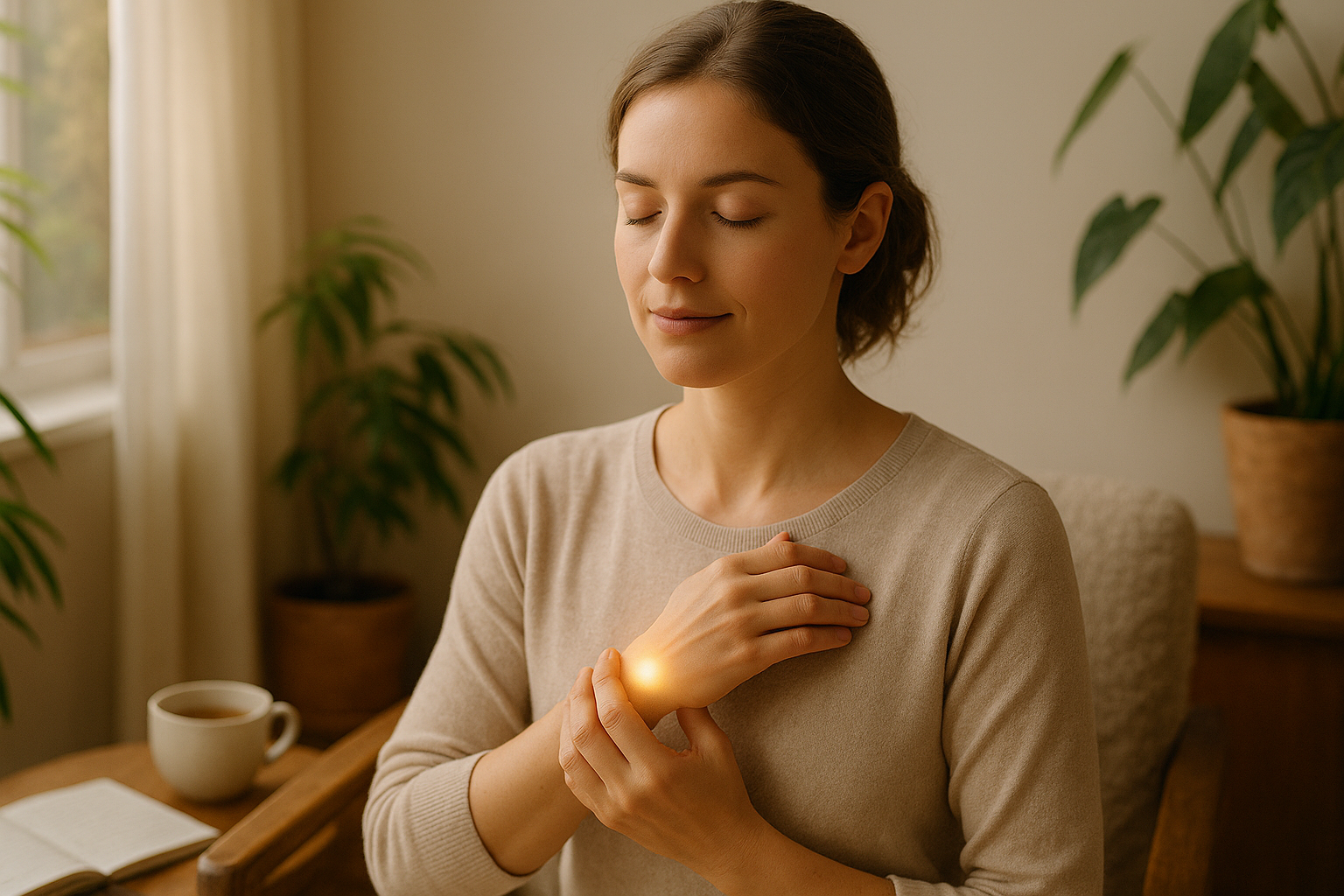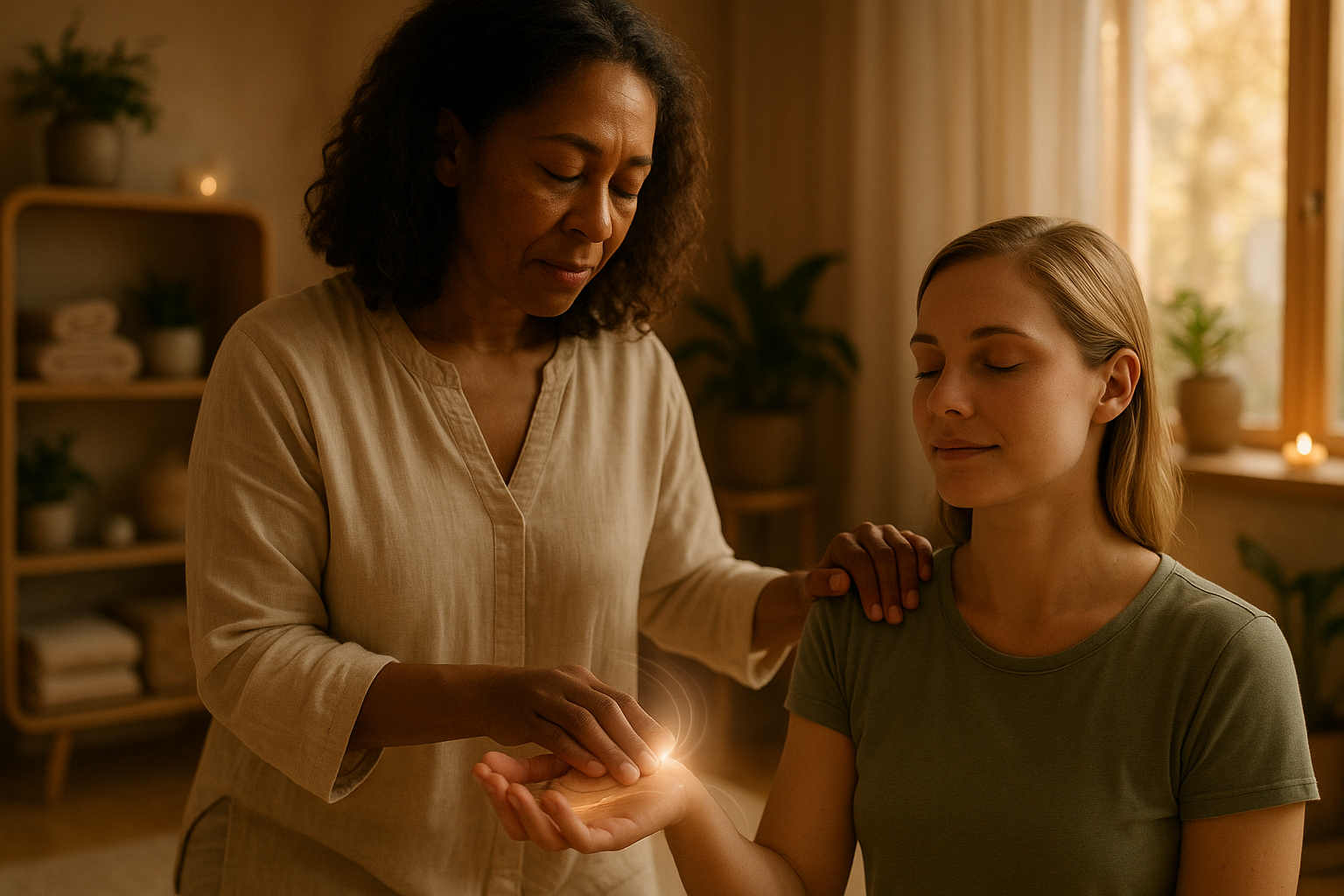Estimated Reading Time: 12–14 minutes
Introduction
Stress, in its simplest form, is the body’s natural response to challenge and change. Yet in modern life—crowded schedules, emotional overload, constant notifications—it has evolved into something far more pervasive. When left unchecked, stress drains energy, dulls focus, and distances us from the deeper sense of calm that makes life feel meaningful.
But what if stress itself wasn’t the enemy?
What if it could be transformed—into strength, awareness, and resilience?
Ancient wisdom and modern psychology are converging on this very idea. Practices like acupressure and self-compassion reveal that our bodies and minds possess powerful, built-in systems for emotional healing. By learning to activate them, we can turn tension into fuel for growth.
This article explores how acupressure, an ancient healing art, and self-compassion, a modern psychological framework, can work together to regulate the nervous system, calm the mind, and transform stress into strength.
What You Will Learn
-
The science of how stress impacts your body and emotions
-
How acupressure works to restore balance and relieve tension
-
The role of self-compassion in transforming emotional stress
-
Step-by-step acupressure techniques for relaxation and focus
-
Practical ways to combine touch and self-kindness for emotional resilience
1. Understanding Stress: A Body-Mind Conversation
 Stress is often framed as a mental problem, but it’s deeply embodied.
Stress is often framed as a mental problem, but it’s deeply embodied.
The moment we sense a threat—whether physical or emotional—the sympathetic nervous system triggers the classic “fight-flight-freeze” response. Cortisol levels rise, the heartbeat accelerates, and muscles tighten.
This physiological cascade can be life-saving in emergencies, but when it’s chronic, it leaves us feeling anxious, fatigued, and emotionally reactive.
According to Dr. Herbert Benson’s work on the relaxation response, the body also has an opposing system that promotes calm and healing. Activating this response regularly helps counteract stress-induced inflammation, improves mood, and strengthens immunity (Benson & Klipper, 2000).
The question, then, is not how to avoid stress—but how to recover from it effectively. That’s where acupressure and self-compassion come in.
2. Acupressure: Touch That Heals
Acupressure is a therapeutic technique rooted in Traditional Chinese Medicine (TCM). It involves applying gentle pressure to specific points on the body—called acupoints—to balance the flow of vital energy, or Qi (Chi).
While acupuncture uses needles, acupressure relies solely on touch, making it a safe and accessible practice for self-care.
Modern research has begun to validate what ancient healers have known for centuries: stimulating certain acupoints can lower stress hormones, regulate the heart rate, and promote a deep sense of relaxation (Lee et al., 2015).
Some of the most effective points for stress relief include:
-
Yintang (Hall of Impression): Located between the eyebrows, this point calms the mind and reduces anxiety.
-
GV20 (Baihui): Found at the crown of the head, it helps relieve tension and promotes mental clarity.
-
PC6 (Neiguan): On the inner forearm, three finger-widths below the wrist crease, it helps soothe emotional distress and nausea.
-
LI4 (Hegu): Between the thumb and index finger, this point releases physical tension, especially in the head and neck.
When we apply gentle, mindful pressure to these points, we are not just stimulating nerves and muscles. We are inviting the body to return to safety—and signaling to the brain that it’s okay to relax.
3. The Science of Acupressure and the Nervous System
Emerging research connects acupressure to the regulation of the autonomic nervous system (ANS)—the body’s control center for stress and relaxation.
By activating pressure-sensitive nerve endings, acupressure may influence vagal tone, increasing parasympathetic activity and producing measurable reductions in anxiety and cortisol (Tsay et al., 2019).
In one study published in Complementary Therapies in Medicine (2015), participants who received acupressure experienced significantly lower levels of stress and improved sleep quality compared to a control group. Another review in The Journal of Pain and Symptom Management found acupressure effective in reducing tension headaches and emotional distress (Lee et al., 2015).
These findings suggest that touch—when applied intentionally—has both physical and emotional ripple effects. It’s a language the nervous system understands intimately.
4. Self-Compassion: The Modern Antidote to Self-Criticism
While acupressure works through the body, self-compassion works through the mind.
Developed and popularized by Dr. Kristin Neff, self-compassion involves treating oneself with the same warmth, understanding, and patience one would offer a friend in distress (Neff, 2003).
It has three core components:
-
Self-Kindness – replacing harsh self-judgment with understanding.
-
Common Humanity – recognizing that struggle is a shared human experience.
-
Mindfulness – acknowledging painful emotions without over-identifying with them.
Research shows that self-compassion reduces anxiety, depression, and emotional burnout while increasing resilience and well-being (Neff & Germer, 2018).
When we’re stressed, our inner critic often intensifies—telling us we’re failing, weak, or not doing enough. Self-compassion interrupts this pattern. It invites us to pause, breathe, and respond with kindness rather than punishment.
5. Where Ancient Touch Meets Modern Mindfulness
Both acupressure and self-compassion share a simple yet profound premise: healing begins with awareness and gentle attention.
-
Acupressure reminds the body it is safe.
-
Self-compassion reminds the mind it is loved.
 Together, they form a bridge between body and mind, restoring harmony where stress has caused separation.
Together, they form a bridge between body and mind, restoring harmony where stress has caused separation.
A gentle practice could look like this:
-
Pause and notice your stress. Where is it living in your body? Your shoulders? Chest?
-
Place your hand over that area. Apply gentle pressure or rest your palm there.
-
Breathe deeply as you silently say, “This is a moment of stress. May I be kind to myself.”
-
Hold the point for 30–60 seconds, feeling warmth spread through the area.
-
Release slowly and thank your body for communicating with you.
This combination of mindful touch and kind awareness activates both physical relaxation and emotional soothing. Over time, it retrains the nervous system to associate stress not with danger—but with an opportunity to return to balance.
6. Practical Acupressure Techniques for Stress Relief
Here are five simple acupressure exercises you can integrate into your daily routine. No equipment, no special skills—just presence and patience.
1. Yintang (Hall of Impression) – Calming the Mind
-
Location: Between the eyebrows
-
How: Use your index or middle finger to press gently in circular motions
-
Duration: 1–2 minutes while breathing slowly
-
Effect: Reduces anxiety, restlessness, and insomnia
2. Baihui (GV20) – Lifting the Spirit
-
Location: At the crown of your head (imagine drawing a line from ear to ear and one from nose to the back of your head; where they cross is GV20)
-
How: Use both hands to cradle the top of your head, fingertips touching at the crown
-
Duration: 1–2 minutes of gentle circular pressure
-
Effect: Relieves tension, fatigue, and mental fog
3. Neiguan (PC6) – Soothing the Heart
-
Location: Inner forearm, three finger-widths below the wrist crease
-
How: Press with the thumb of your opposite hand
-
Duration: 1 minute per side
-
Effect: Calms emotional turmoil, relieves palpitations and nausea
4. Hegu (LI4) – Releasing Tension
-
Location: Between thumb and index finger
-
How: Squeeze gently but firmly while taking deep breaths
-
Duration: 1 minute per side
-
Effect: Eases headaches, neck tension, and irritability
5. Shenmen (HT7) – Nourishing Inner Peace
-
Location: On the wrist crease, in line with the little finger
-
How: Press lightly using the thumb of your other hand
-
Duration: 1–2 minutes
-
Effect: Supports emotional stability and restful sleep
Performing these points as part of a mindful routine—especially before bed or after a stressful moment—helps the body re-establish inner harmony.
7. Cultivating Self-Compassion in Practice
Self-compassion is not self-pity. It’s not indulgence or denial of difficulty. It is courageous acceptance—the ability to meet suffering with tenderness rather than resistance.
Here are three daily self-compassion exercises you can combine with acupressure:
1. The Self-Compassion Break (Neff, 2003)
When stress arises, pause and silently repeat:
“This is a moment of suffering.
Suffering is part of life.
May I be kind to myself in this moment.”
Rest your hand gently on your heart or over an acupoint as you breathe in kindness and breathe out tension.
2. Kind Touch Meditation
Place your palm on the center of your chest (heart chakra) or on a stress-related acupoint like PC6.
Feel the warmth and pressure of your hand, imagining it as a friend’s comforting touch.
This practice releases oxytocin—the “bonding hormone”—which lowers stress and promotes feelings of safety (Uvnäs-Moberg et al., 2015).
3. Reframing Inner Dialogue
When the inner critic appears, respond gently:
“I hear you, but I am doing my best.”
“It’s okay to rest.”
“I deserve care, too.”
By pairing affirming words with physical grounding, you create a holistic circuit of healing: body reassurance + emotional acceptance.
8. The Power of Consistency: Turning Healing into Habit
The benefits of acupressure and self-compassion amplify through consistency.
In the same way that physical training builds muscle, emotional self-care strengthens neural pathways of calm and connection.
A simple daily ritual might look like:
| Time | Practice | Duration |
|---|---|---|
| Morning | Yintang or GV20 acupressure while setting intention for the day | 2–3 min |
| Afternoon | PC6 pressure with mindful breathing | 2 min |
| Evening | Heart-centered self-compassion meditation | 5 min |
| Before sleep | Shenmen acupressure + gratitude reflection | 3–5 min |
Within a few weeks, you may notice subtle shifts: a steadier breath, softer self-talk, and a quicker return to calm after stress. These are signs that your nervous system—and your spirit—are learning resilience.
9. From Stress to Strength: Reframing the Narrative
When stress arises, most of us instinctively resist it. We push it away, distract ourselves, or judge ourselves for feeling overwhelmed.
But resilience isn’t about suppressing discomfort—it’s about transforming it.
Through acupressure, we remind the body that tension is not a threat. Through self-compassion, we remind the heart that imperfection is human. Together, they turn moments of strain into opportunities for self-connection.
Each time you meet stress with touch and tenderness, you re-educate your entire system to trust itself again.
You are not broken. You are responding. And in that response lies your strength.
10. Integrating the Practice into Modern Life
You don’t need a quiet retreat or long rituals to benefit from these practices.
They can weave seamlessly into daily life:
-
Press PC6 during traffic or meetings to stay grounded.
-
Touch your heart center before a difficult conversation.
-
Apply gentle pressure on GV20 during moments of fatigue at work.
-
Whisper kind words to yourself when plans fall apart.
The goal is not to eliminate stress but to transform your relationship with it—from resistance to responsiveness, from tension to wisdom.
11. When to Seek Professional Support
While self-practices like acupressure and mindfulness are powerful, they do not replace professional medical or psychological care.
If you experience chronic anxiety, depression, or persistent physical pain, consider consulting a qualified health practitioner or licensed acupuncturist. Combining professional guidance with self-care enhances both safety and effectiveness.
12. Final Reflection: Touch as a Path to Inner Strength
 Our culture often celebrates strength as endurance—pushing through pain, suppressing vulnerability, staying “in control.”
Our culture often celebrates strength as endurance—pushing through pain, suppressing vulnerability, staying “in control.”
But true strength arises when we listen to the body’s signals and respond with compassion.
Every gentle press of an acupoint, every kind word to yourself, is a quiet act of revolution against stress. It says:
“I will meet my struggle not with judgment, but with presence.
I will turn this tension into tenderness.
I will transform stress into strength.”
Healing, after all, starts with touch—first the physical kind, then the emotional one.
References
-
Benson, H., & Klipper, M. Z. (2000). The Relaxation Response. HarperCollins.
-
Lee, M. S., Kang, C. W., Lim, H. J., & Lee, M. S. (2015). Effects of self-acupressure on stress and sleep quality: a systematic review. Complementary Therapies in Medicine, 23(6), 1049-1058.
-
Neff, K. D. (2003). Self-compassion: An alternative conceptualization of a healthy attitude toward oneself. Self and Identity, 2(2), 85-101.
-
Neff, K. D., & Germer, C. K. (2018). The Mindful Self-Compassion Workbook: A Proven Way to Accept Yourself, Build Inner Strength, and Thrive. Guilford Press.
-
Tsay, S. L., Chen, M. L., Chen, S. C., & Lin, K. C. (2019). Effects of acupressure therapy for patients with anxiety and stress. Journal of Advanced Nursing, 75(10), 2242-2253.
-
Uvnäs-Moberg, K., Handlin, L., & Petersson, M. (2015). Self-soothing behaviors with oxytocin release: New evidence and its relevance for mental health. Psychoneuroendocrinology, 51, 414-425.





